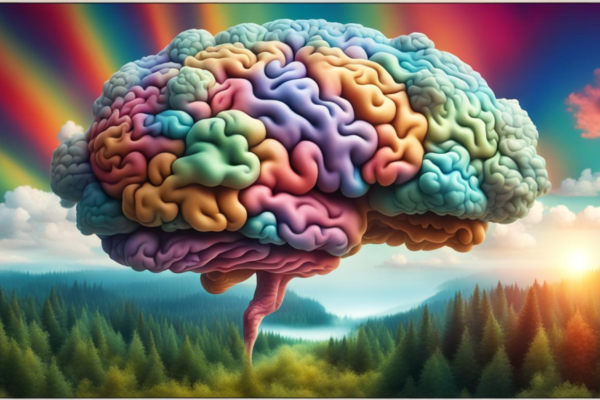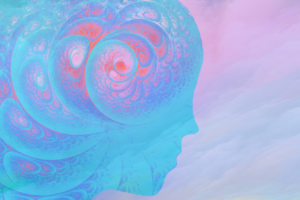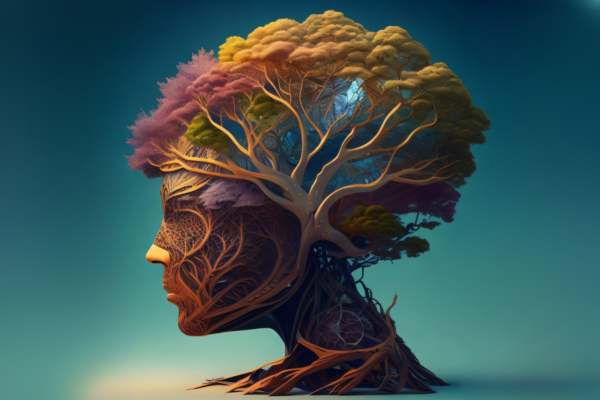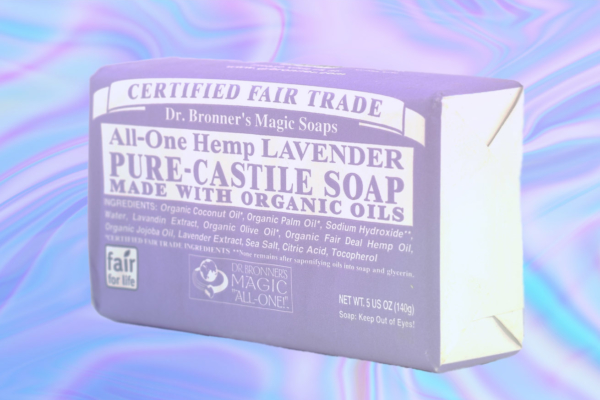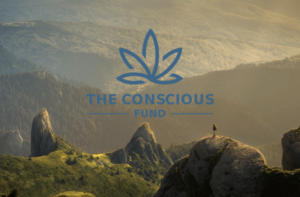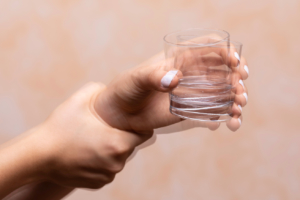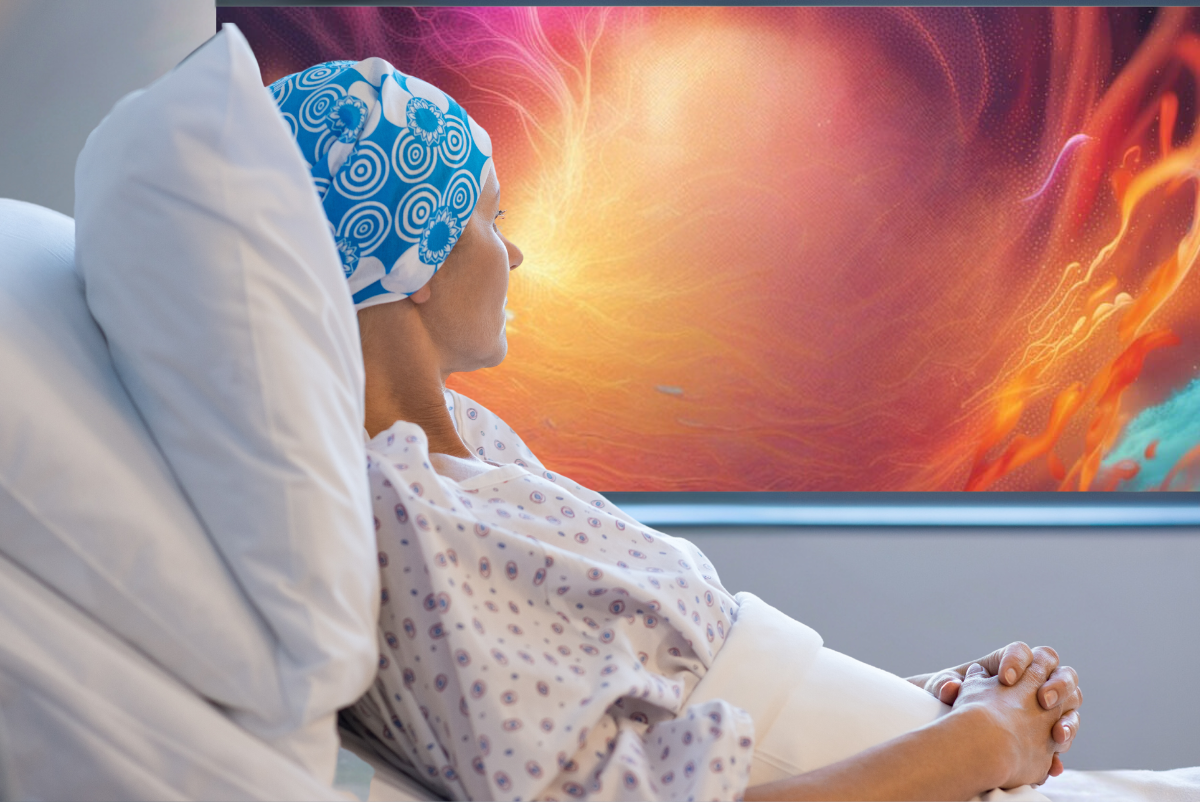
Aldous Huxley requested LSD, his “Moksha-medicine,” which he regarded as a sacrament, in writing from his wife, Laura Huxley, on the day of his death.1 Huxley, L. (2019). This Timeless Moment: A Personal View of Aldous Huxley. TarcherPerigee.“Moksha” is derived from Sanskrit, meaning “to free,” and is rooted in Eastern philosophies and religions, meaning the freedom from samsara, or the liberation from the cycle of birth, death, and rebirth.2Moksha (2023a) Wikipedia. Available at: https://en.wikipedia.org/wiki/Moksha (Accessed: 23 October 2023). The Tibetan Book of the Dead, among other teachings, places great importance on the state of consciousness at and around the time of death.3 Padmasambhava (Author), Lāma Kari Dawa-Sandip (Translator) Baldock, John (Introduction). (2022). The Tibetan Book of the Dead. (Translation of the Bardo Thodol). Sirius Publishing.
To quote Laura Huxley from “This Timeless Moment”:
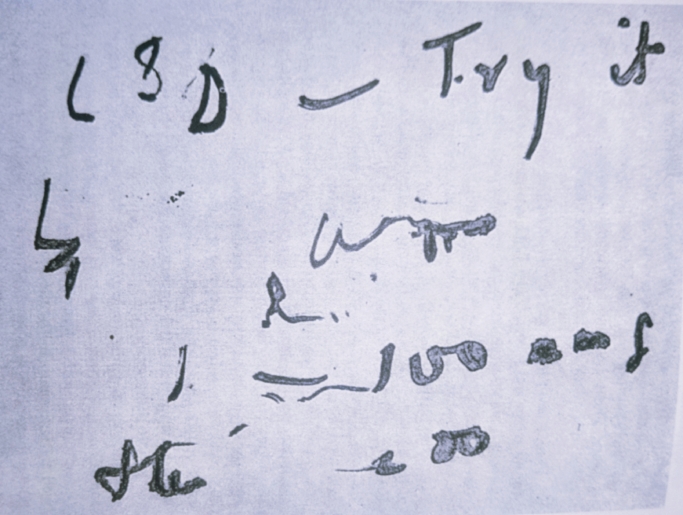
“There are two diametrically opposite views about dying. One is that the best way is to go without knowing it, to slip away-hopefully when sleeping. The other view- less prevalent but more spiritually enlightened- is that one should die as aware and clear-minded as possible; that death is one of the great adventures of life, and one should not miss it or block it by unconsciousness. In this view, it is thought that the future life of the “soul” or “consciousness” or “mind” (whatever word one uses for that which pervades the body and gives it life) is influenced to a great extent by the thoughts and feelings at the moment of death.”
Shifting Focus on End-Of-Life Issues and Emotions
If our current methods, practices, and thoughts about Hospice and Palliative Care, and end-of-life attitudes and knowledge in general, would change, MAiD wouldn’t be necessary in most cases, but it should be an accessible option and choice for everyone that we then don’t need to exercise. Shifting the focus to the surrounding suffering would, in-and-of itself, present many different options.
There should be a distinction made between normal, appropriate human responses to situations surrounding end-of-life issues, and those that are maladaptive and/or cause harm and unnecessary suffering. Depression and anxiety are the two biggest issues being talked about, both in end-of-life and psychedelic communities. Feelings of sorrow and anxiety are a very appropriate response to the perceived loss of a life, a person, and in expectation of the unknown.
We are too afraid of death within ourselves to let our communities accept and sit with their feelings about these things. Are we more concerned about their discomfort and suffering, or with our own? We are “spiritually bypassing” things we don’t want to address, instead of facing the root causes or issues. We perceive death as a negative or a problem to fix, a disease to cure, and fight against the natural order of things. We are further death-shaming people by labeling the emotions surrounding the end of life process with words that carry a negative connotation, like depression and anxiety. We are pathologizing a normal and necessary process with diagnoses. We are labeling death, and all its many parts- aging, grief, etc., as problems to be treated or solved.
The Concurrent Rise of Psychedelics and MAiD
Both psychedelics and MAiD are currently rising in popularity, acceptance, and becoming legal and accessible to more and more people across the globe. MAiD stands for Medical Aid in Dying. It is a legal process in some jurisdictions that allows terminally ill patients to choose to end their life with the assistance of a healthcare professional. The purpose of MAiD is to provide a compassionate option for individuals who are suffering from a grievous and irremediable medical condition and wish to have control over the timing and manner of their death.
To qualify, patients must meet specific criteria, which can vary depending on jurisdiction. Generally, this includes being a competent adult (of legal age and capable of making informed decisions, though qualifications for this criteria are debatable to be sure), having a condition which is deemed serious, incurable, and causing enduring physical or psychological suffering that is intolerable to them, making a voluntary request without any external pressure or influence, providing informed consent, undergoing a waiting period (in most jurisdictions, there is a mandatory waiting period between the initial request and, often, a mandatory second written request to “allow patients to reflect on their decision”), ability to administer or at the very least attempt to administer the medication to themselves, and, except for in Vermont and Oregon, residency in the jurisdiction where this process is requested.4Assisted suicide in the United States (2023) Wikipedia. Available at: https://en.m.wikipedia.org/wiki/Assisted_suicide_in_the_United_States (Accessed: 23 October 2023). So, one has to find a physician willing to prescribe the medications, which they are not required to do.
I know of a Hospice organization where the prescribing MD refused to prescribe the medication on the scheduled/planned day of the event for a lady with ALS, resulting in a lot of confusion and scrambling, not to mention probably some very difficult emotions for the patient and family. Often,though, it is the patient’s primary physician, not the Hospice provider, who will prescribe MAiD medications. They must meet all these stipulations, suffer through waiting periods and expend a lot of effort jumping through regulatory hoops. This still leaves many people, even those within jurisdictions where it is legal, without access.
For example, if someone’s disease process has rendered them unable to use their hands and arms to self-administer, they could be disqualified. Got dementia? You may be deemed unable to make an informed decision. You’d stand to benefit from your death. (Life insurance policies are generally protected under this process.) This could also present a hurdle for some. There’s also a lot of talk and legislation going around about MAiD for mental health issues. Canada is scheduled to decide on a final ruling on this in March of 2024, after having delayed the initial deadline from March 2023 due to opposition. Some European countries already allow MAiD for those with mental illness as the sole underlying condition, such as the Netherlands, Belgium, Luxembourg, and Switzerland. Typical medications used for MAiD have historically included medications such as secobarbital, pentobarbital, diazepam, morphine, propranolol, digoxin, amitriptyline and more.5 Rice, P. Pharmacological Review of Medical Aid in Dying (MAiD). CUAnschutz.edu. (Major drug classes include barbiturates, benzodiazepines, opioids/analgesics, cardiotoxic agents, antiemetics, sedatives/hypnotics, and neuromuscular blockers also known as paralytic agents.)6 Stukalin, I., Oluwatobi, O., Naik, V., Wiebe, E., Kekewich, M., Kelly, M., Wilding, L., Halko, R., Oczkowski, S. (2022). The term euthanasia is typically thought of as physician administered, and physician-assisted is typically thought of as prescribed by a physician and self-administered via an oral route. Depending on the medications used and the individual differences between patients, there is varying efficacy and duration of the process. I have personally seen the dying process take upwards of 4 hours after ingesting the medication. Also, even with antiemetics, patients can also vomit after ingesting the medication, which could result in many unwanted outcomes, perhaps even “failed” or unsuccessful attempts. Now let’s discuss psychedelics. It’s no coincidence that many of the baby boomers of the psychedelic 60’s are now reaching the end of their lives, and that the death positivity movement is also gaining attention. Any sufficiently respectable psychonaut has at least seriously contemplated their own mortality, if not experienced some sense of it. Just look at the recent barrage of articles, podcasts, and stories about the intersection of psychedelics and death.
5-MeO-DMT, sometimes called the God molecule, has been recounted many times to bring to users a sense of complete ceasing to exist, or an experience like dying.7 Michael, P., Luke, D., Robinson, O. (2023). This is Your Brain on Death: A Comparative Analysis of a Near-Death Experience and Subsequent 5-Methoxy-DMT Experience. Frontiers in Psychology. Ketamine can give the feeling of being apart from your body and often is experienced in very much the same way as NDE’s (Near Death Experiences) or OBE’s (Out of Body Experiences).8WOLFSON, P. (2016) Ketamine papers science, therapy, and transformation. S.l.: MULTIDISCIPLINARY ASSN FO. Other psychedelics, especially tryptamines such as LSD, psilocybin, and DMT often bring people into a sense of oneness and interconnectedness with all things and the universe at large, and can produce many different visual, physical, and emotional effects. There are many different molecules commonly grouped together and called DMT. One I am referring to here is N,N-DMT, which when smoked lasts about 15 minutes on average, though there are other routes of administration, and when mixed with an MAOI, such as in Ayahuasca, can last for hours. DMT is also produced endogenously by the human brain, not to mention many other plants and animals.
There are studies, literature, and articles about all the different chemical compositions of these substances, so for the purpose of this article, I will mainly be discussing N,N-DMT or 5-MeO-DMT.
The Role of Psychedelics in Improving End of Life Quality
One source of 5-MeO-DMT is from the parotid glands of the Sonoran Desert Toad, which is harvested by causing unnecessary distress to these creatures. It can be synthesized in a much more humane way in a lab. Most people are at least partially aware of efforts to legalize, decriminalize, and potentially reschedule many of these substances. There is currently research taking place regarding the use of psychedelics for mental health, PTSD, eating disorders, in the terminally ill, in patients with TBI’s, strokes, neurodegenerative diseases, dementia, inflammatory issues, and many other human ailments. MDMA, though not typically considered a classical psychedelic, has also shown promise and undergone clinical studies and legislative changes for many of the same purposes. Psychedelics are in varying states of legalization or Washington, D.C. and others, with many more new states or jurisdictions considering such changes in the near future. Ketamine is currently legal everywhere, and it’s been used in medical settings, though not utilized for necessarily the same purposes, for many years. Of the studies I’ve read, there are very few adverse side effects associated with ketamine used in the palliative setting, the most prevalent being anxiety, for which most palliative patients have some adjunct medications on hand9 Solien, J., Koon, M., Henning, N., Pucko, J., Powell, R., & Shea, K. (2021). Improving End of Life Quality Through The Implementation and Testing Of A Ketamine Protocol for Reduction of Depression & Pain. Casa de la Luz Hospice and OnePoint Patient Care., and can be ameliorated by breathing techniques, guidance, consented and appropriate touch, and many other natural methods. In “This Timeless Moment“, psychedelics given at end of life were reported to either have positive effect or no effect, but not adverse effects.
Setting Intentions
There is a lot to consider at the intersection of these things. The intention of MAiD medications is to be lethal to the individual ingesting them. Different terms such as euthanasia and assisted suicide both point to the intention of ending one’s life. Intention is a huge buzzword amongst the psychedelic community today, but actually does carry quite a bit of significance, especially here. Many philosophies and religions view death as a natural process, inseparable from life, and most point to some semblance of an eternal consciousness or existence.10 Watts, A. (1957). The Way of Zen. Vintage Books. Many Eastern philosophies and religions teach that you should not take a life, even your own.111 Watts, A. (2011). Tao: The Watercourse Way. Souvenir Press It’s been said that death is the process towards life in a different dimension. Christianity and many other religions have long held that suicide is a “sin.” The basic premise of this is that we are attempting to exert control and disrupt the process of nature, though it has turned into a scare tactic and fear response that embodies the very principles it seeks to steer individuals away instead on suffering. MAiD would be to intentionally end one’s life, whereas psychedelics would potentially help and comfort the person in order to assist them to naturally complete the process on their own.
A Philosophical View on Suffering
Plato explained that death should be viewed as the achievement of life. Many philosophers of his time had similar thoughts. Socrates professed that death would be a benefit for those who kept their minds sharp. Aristotle said that to die is to return to one’s real home.12Hupp, A. (2017). A Psychological and Philosophical Understanding of Death: An Analysis of Platonic and Epicurean Philosophy in Modern America. http://www.exhibit.xavier.edu/hab/32 There is also metaphysical and scientific evidence of the continuation of life in some form after permanent physical death. One very intriguing area is the story of OBE’s, Out of Body Experiences, and the NDE (Near Death Experience) phenomena.
In “Journeys Out of the Body,” Robert A. Monroe recounts hundreds of journeys to the “astral” realms.13Monroe, R. A. (1971). Journeys Out of the Body. Doubleday. There are many similarities between his experiences, NDE’s, and psychedelic experiences. One story that really sticks out, and speaks loudly to me about why the manner of death and the state of consciousness at time of death is so important (i.e. why we shouldn’t let people suffer and why we should promote conscious awareness of death), is his recounting of having visited his father on one of the astral planes after his physical death. His father had a stroke several months before his death, and though having been a linguist, he had spent his last few months desperately and unsuccessfully trying to communicate. When he encountered his father in the astral plane after his death, what he described conjures visions of a nursing home in limbo. Having worked in and visited many such facilities, I definitely wouldn’t want my loved ones in a place like that in this consensus reality, or any other. His father had not escaped samsara, and was existing as an interloper waiting to be reborn again. So, it’s not just the intentional taking of one’s life, it is also suffering endured before, at, or around the time of death that affects what happens next, making it our duty to do everything within our power to collectively end, or at least lessen, suffering.
There is also scientific evidence and theories to support these possibilities in quantum physics. The government has even done extensive studies on remote viewing, astral projection, and other metaphysical phenomena, lending credibility to the possibility of their existence. Regardless of whether you put any merit into religious, philosophical, scientific or metaphysical thinking or teachings, on a basic human level, there is much suffering that could be avoided immediately if people were more aware of the options. And if there was a possibility that the manner in which you die could affect what happens after, would you want to know? This is where we are not providing fully informed consent. Humans are holistic beings, with mind, body, and spirit (or whatever term you like to use) being inextricably intertwined. So, to offer fully informed consent is to also educate about the non-physical aspects of MAiD, and suffering near the end of life.
Shades of Gray
What options are currently available? VSED (Voluntarily Stopping Eating and Drinking) is a valid option for many.14 (No date) Clinical guidelines for voluntarily stopping eating and drinking (VSED). Available at: https://www.jpsmjournal.com/article/S0885-3924(23)00565-1/fulltext (Accessed: 23 October 2023). Especially with some terminal illnesses like dementia and cancer, the person no longer actually experiences hunger. Eating at this point should not be forced, but offered for pleasure. (Adversely, some people previously NOT allowed to eat due to physical limitations like difficulty swallowing, SHOULD be offered food and drink for pleasure at end of life with knowledge of possible complications for a focus on quality, comfort, and enjoyment if it’s tolerated.) Typically within a few weeks without nourishment, the body will shut down. So far, the options discussed have all been focused on operating within the constraints of the current legal and medical systems. Gray areas also exist. People take their own lives every day all over the world. Not that I am encouraging or condoning this, but carbon monoxide poisoning can be a pretty peaceful way to go, and people do it every day without the assistance of a medical provider or approval of a governing body.155 Byock, I. (1997). Dying Well: Peace and Possibilities at the End of Life. Riverhead Books.
Aside from the above-board legal psychedelic market, there exists the ‘gray’ market, the underground, and the indigenous peoples and traditions that have stewarded these medicines since time immemorial so that we can perhaps experience their benefit today within our legalized, regulated, and medicalized systems. Current Hospice and Palliative guidelines are actually such that no person has to suffer at the end of life there is no legal limit to the amount of medication that can be prescribed- the right dose is the one that works- but most clinicians (doctors, nurses, pharmacists) are very uncomfortable with this concept. Apart from intentionally lethal medications, I’ve never felt I was administering a “lethal dose” of morphine or Ativan or any of the drugs used- it simply makes a person comfortable enough for a person to complete their own natural process of dying.
Exploring the Full Potential of Psychedelics
If you have ever watched someone struggling to die, to achieve their physical death, you realize how difficult this can be for everyone involved. Family and loved ones are usually standing around, helplessly engaged in The Death Watch, asking how much longer this transition could possibly take.
This is another area where psychedelics could be useful. DMT, for one, is an endogenous substance in the human body, as we’ve covered. I personally suspect 5-MeO-DMT would be the best form to use to aid people struggling to obtain physical death, given the trip reports with this compound. Dr. Andrew Weil referenced this medicine and its amazing transformative potential in his keynote address at the Psychedelic Science 2023 conference hosted by MAPS, saying that 16 Byock, I. (1997). Dying Well: Peace and Possibilities at the End of Life. Riverhead Books. it may be a key to unlock much potential. Endogenous DMT is present and perhaps produced or utilized in many different states. One such time may be during the dream state. Which leads me to believe that excess or unutilized DMT could be what causes hallucinations during extended periods of sleep deprivation, or that it is synthesized during sleep and is useful in the waking state, which could also be why good sleep hygiene is said to prevent dementia. And to the point that one’s state of consciousness at and around death can influence what happens after, there is a parallel to be drawn between one’s state of mind and consciousness at and before sleep, and how this can affect sleep quality and dreaming. Some even meditate or set intentions prior to sleeping with focus on lucid dreaming and astral projection. Endogenous DMT is also thought to be involved in “altered states” induced through meditation, breath work, ecstatic dance, and it’s been studied in relation to NDE’s, or Near Death Experiences, among many other things. I personally experienced an NDE, and it was definitely psychedelic. Studies of the mammalian brain show that it produces DMT at the time of cardiac death, possibly to protect neurological tissues.17Dean, J. et al. (no date) (PDF) biosynthesis and extracellular concentrations of N … – researchgate. Available at: https://www.researchgate.net/publication/334074971_Biosynthesis_and_Extracellular_Concentrations_of _NN-dimethyltryptamine_DMT_in_Mammalian_Brain (Accessed: 23 October 2023). Michael (n 7).I also believe it to be involved during OBE’s, or Out of Body Experiences, and contact encounters with extra/multi-terrestrial/dimensional beings.
This co-occurrence of OBE’s and NDE’s also points to the potential of ketamine to aid a person’s natural transition to physical death, when it is time. This is not to say that it will cause physical death, but it may be helpful in assisting a person to become comfortable and disconnected enough from the physical for this process to occur on its own. Ketamine, a common and legal, yet powerful, disassociative, can also elicit the sensation of being apart from one’s physical body. In the time before someone dies, when they’re “seeing beyond the veil,” talking to their ancestors and deceased loved ones, this could be of the same or similar phenomenological origin as DMT or other psychedelic entities. There are many similarities in the tales of these entities, elves, ET’s and angels.
Also, few of the “psychedelic elders” have or had dementia, so there may be a synthesis or uptake dysregulation, or other biological process, of endogenous DMT present in DeMenTia. Persons with dementia often have experiences we label as psychosis or hallucinations. It’s also interesting to note the similarities between space travel, death, and these altered states. Consciousness may continue to be active after final physical death, and those who have experienced NDE’s and OBE’s can often recall very specific details which occur while they are nearly physically dead and shouldn’t (according to current prevailing thought) be able to recall or form memories or thoughts18Parnia, S. (2013). Erasing Death: The Science That is Rewriting the Boundaries Between Life and Death. HarperOne., though there is much research and philosophizing taking place in this area.
The pineal gland has been thought to produce or utilize this endogenous DMT. Interestingly, I read Rick Strassman’s “DMT: The Spirit Molecule”18in tandem with “The Tibetan Book of the Dead,” and it points out that the Tibetan teachings say that it takes 49 days for a soul to reincarnate, and 49 days is also the point at which the pineal gland appears in a fetus and the time at which gender is able to be detected, or the duality of male/female appears. Then you have the DMT flood experienced during the squeeze of birth, if birthed naturally through the birthing canal. There are also changes in the functions of the pineal gland at puberty. Playing such an important role at so many major moments, it stands to reason that endogenous DMT plays a huge role in physical death. Perhaps supplementing the body’s endogenous DMT with exogenous sources would help people complete the transition from near death to actual physical death.
Fear and Lack of Knowledge Hold Us Back
Our fear of death permeates our society beyond what most people realize. Our fear of death leads to ageism and has become yet another sector of the American Industrial Complex, as evidenced by biohacking, anti-aging extremists, lack of respect for elders, and a loss of the joys of aging- which all apparently have marketable “cures.” Our innate capacity and knowing how to care for our aging, dead, and dying has been hidden from us, and now is being sold back to us.
What is readily available to all is weaponized and commoditized by our capitalist, currency-based society. The Death Industrial Complex, really ushered in by the American Civil War, has contributed to our fear of the natural process of death and aging. We now view aging and dying as dangerous, problematic, and to be avoided. (For a wonderful, entertaining, and informative explanation of this, I recommend Caitlyn Doughty’s explanation in episode 7- “Turtles of the Eclipse” of The Midnight Gospel with Duncan Trussell.19Trussell, D., Ward, P. (2020). “The Midnight Gospel.” Netflix.)
MAiD is only now becoming legal in some states. Psychedelics are just as controversial. (Both are stigmatized and considered taboo due to fear.) So can we legally and above-board start giving psychedelics to help people have the best death possible, as the person experiencing it defines it? The legality of something shouldn’t ultimately stop us from doing what’s best for people. There’s also many people, many that I care for, in vegetative states, prisoners in their own bodies, that I think could benefit from these interventions, that will continue to suffer while we argue about politics, regulation, legality, and credentialing. Though studies are now being done on the effects of psychedelics in patients with strokes, traumatic brain injury, and many other dis-eases, the legal and mainstream acceptance of these things is some time away. And no, I haven’t given DMT to any dying people or those in vegetative states (which would bring up more issues of informed consent), but I perhaps think we should consider it. Ketamine is widely legal and also a great tool. It can help to separate your true self from your physical self, to sense that your greater “I” is not only this physical body. Psilocybin is another great tool, especially to experience the connectedness and liveness of all things, not just for those who are actively dying, but also the communities around them. Yes, psychedelics can be great for anxiety and depression, but if we only look at their benefits through the more-relatable lens of anxiety and depression (because we’re afraid to just talk about dying and face mortality), we’ll be missing out big time.
Painting a Different Picture
While I understand why the main focus of applications for psychedelic use at the end of life are focused on depression and anxiety, this is a very limited view. If you read Laura Huxley’s account of Aldous’ death, it paints a beautiful picture of his transition, awake and aware of what was happening, with his beloved serving as his doula to another realm. Her gentle and familiar voice guiding him towards the “Liberation in the Intermediate State Through Hearing” that they, together, had deeply considered through the Tibetan Book of the Dead and in reading and re-reading a draft of The Psychedelic Experience by Timothy Leary, Ralph Metzer, and Richard Alpert (Ram Dass)20eary, T., Metzner, R., Alpert, R., Introduction by Pinchbeck, D. (1964, 1992, 2007). The Psychedelic Experience: A Manual Based on the Tibetan Book of the Dead. Citadel Press.in his final days. His terminal agitation, untouched by traditional comfort medications, dissipated. With her loving encouragement, he knowingly, willingly, and comfortably turned towards his next adventure. Deeply curious, open, and introspective people, they leaned into this process together. He also communicated that he wanted select members of his inner circle to take LSD with him as he went through this process. Some people naturally have shared-death experiences. A shared death experience is an experience in which loved ones, caregivers, or even those nearby share some aspect of the dying person’s transition.21Moody, R. Raymond Moody Legacy: Shared Death Experiences. Gaia Network. I often have shared death experiences with those in my care. It’s as if, on an energetic or spiritual level, perhaps, I accompany the dying person across the veil. It feels almost as if I ferry them across the waters, and get to share in their experience, which fills me with gratitude and the sense of connectedness and love, held in the center of the surrounding grief.
Could having your loved ones also take these substances assist in eliciting that shared experience? Could we allow loved ones to venture into the beyond with their person, like an escort pass or gate pass to enter the terminal area (no pun intended) before they board the plane and take off? This could take the notion of not having to die alone to another level. Having been with many people as they die, I’ve often had a sense of their state after physical death occurs. Perhaps it is a recall of my own NDE and other experiences, at times experiencing the “void,” the in-between state, the bardo, and also the “nothingness but shining,” enveloped in love, and the interconnectedness of all things. Sensing the continuity of life beyond physical death, where time and space no longer exist.
Experience Matters
Try though we might, there is no way to really explain, with our restrictive and limited language, especially, what these ineffable experiences really contain. The only way to truly understand them is to experience it for yourself. So many people report having these experiences, and afterwards having a sense of the fundamental ok-ness of everything. No longer fearing death. They decrease physical, mental, and spiritual suffering. Death itself can be a mystical experience, and there’s a possibility that you can sense this before you die. Not just for the acutely dying person, but for the community around them, these experiences can bring a sense of unity, peace, and comfort.
What the Future Holds, One Doesn’t Know
Many questions remain unanswered, and many more are not even being asked or talked about. When deciding if people should be allowed to access MAiD (which I believe should be anyone’s personal choice in the spirit of autonomy and personal sovereignty), especially if it is for mental
health issues alone, we should first exercise every other option. Again, the real goal is to end suffering. This should be a fully informed decision, both medically and spiritually. With all the
instances in ancient and Eastern philosophy, modern religions, and metaphysical studies that point to untoward outcomes when one intentionally takes their own life, regardless if you believe it to be true, and since suffering, even today, can be eliminated or greatly reduced, we should consider this to be an aspect of providing fully informed consent. To put it in medical terms of adverse outcomes, even if there were a 1% chance that this would be the case, would it not be our duty to inform? Even if you don’t believe in any existence after this one, and perhaps especially if you don’t, if presented with this possibility and the knowledge that you could be made comfortable, would you want to forgo your last 6 months of this existence? For even if we do continue on, we will not have this moment again. If you do believe in these concepts, that you have been in the cycle of samsara and have possibly been incarnating in different forms longer than we can fathom, may do so many more times before achieving moksha (or enlightenment, nirvana, or whatever term you chose to use), perhaps it doesn’t matter much on a personal level. Perhaps changing the way we die would provide a shift in the evolution of the collective consciousness. We should at least try providing substances and support that carry the intention of supporting a being’s natural process instead of doing it for them. In the case of MAiD for mental health purposes alone, every other option should be presented.22Clinicians talking: Euthanasia for SMI — right or wrong? (2023) Medscape. Available at: https://www.medscape.com/viewarticle/995146 (Accessed: 23 October 2023). As for informed consent, we should ask what constitutes the ability to provide informed consent. Does the pain and suffering that one is attempting to escape from impact decision-making? Simply facing the end of life can change your world view. Do psychedelics impact your capacity for providing informed consent, and if so, for how long?23Friedman, S. (2023) How do psychedelics change our thoughts on death?, Cannadelics. Available at: https://cannadelics.com/2023/08/21/how-do-psychedelics-change-our-thoughts-on-death/ (Accessed: 23 October 2023). Informed consent and end-of-life care and options should also be offered from a holistic perspective, not solely based on medical and widely-accepted outcomes. We’re just starting to scratch the surface of these issues in modern times, though looking to our elders, ancestors, and ancients provides direction. Again, in the interest of personal sovereignty, I do believe that MAiD should be legal and accessible to all people, but that we should strive to live in a world where nobody wants to exercise that right, because we have really looked at and addressed suffering.
Perhaps it’s time we revisit death à la Huxley.
References:
1. Huxley, L. (2019). This Timeless Moment: A Personal View of Aldous Huxley. TarcherPerigee.
2. Moksha (2023a) Wikipedia. Available at: https://en.wikipedia.org/wiki/Moksha (Accessed: 23 October 2023).
3. Padmasambhava (Author), Lāma Kari Dawa-Sandip (Translator) Baldock, John (Introduction). (2022). The Tibetan Book of the Dead. (Translation of the Bardo Thodol). Sirius Publishing.
4. Assisted suicide in the United States (2023) Wikipedia. Available at: https://en.m.wikipedia.org/wiki/Assisted_suicide_in_the_United_States (Accessed: 23 October 2023).
5. Rice, P. Pharmacological Review of Medical Aid in Dying (MAiD). CUAnschutz.edu.
6. Stukalin, I., Oluwatobi, O., Naik, V., Wiebe, E., Kekewich, M., Kelly, M., Wilding, L., Halko, R., Oczkowski, S. (2022). Medications and Dosages Used in Medical Assistance in Dying: A Cross-Sectional Study. CMAJ Open.
7. Michael, P., Luke, D., Robinson, O. (2023). This is Your Brain on Death: A Comparative Analysis of a Near-Death Experience and Subsequent 5-Methoxy-DMT Experience. Frontiers in Psychology.
8. WOLFSON, P. (2016) Ketamine papers science, therapy, and transformation. S.l.: MULTIDISCIPLINARY ASSN FO.
9. Solien, J., Koon, M., Henning, N., Pucko, J., Powell, R., & Shea, K. (2021). Improving End of Life Quality Through The Implementation and Testing Of A Ketamine Protocol for Reduction of Depression & Pain. Casa de la Luz Hospice and OnePoint Patient Care.
10. Watts, A. (1957). The Way of Zen. Vintage Books.
11. Watts, A. (2011). Tao: The Watercourse Way. Souvenir Press
12. Hupp, A. (2017). A Psychological and Philosophical Understanding of Death: An Analysis of Platonic and Epicurean Philosophy in Modern America. http://www.exhibit.xavier.edu/hab/32
13. Monroe, R. A. (1971). Journeys Out of the Body. Doubleday.
14. (No date) Clinical guidelines for voluntarily stopping eating and drinking (VSED). Available at: https://www.jpsmjournal.com/article/S0885-3924(23)00565-1/fulltext (Accessed: 23 October 2023).
15. Byock, I. (1997). Dying Well: Peace and Possibilities at the End of Life. Riverhead Books.
16. Dean, J. et al. (no date) (PDF) biosynthesis and extracellular concentrations of N … – researchgate. Available at: https://www.researchgate.net/publication/334074971_Biosynthesis_and_Extracellular_Concentrations_of _NN-dimethyltryptamine_DMT_in_Mammalian_Brain (Accessed: 23 October 2023).Michael (n 7).
17. Parnia, S. (2013). Erasing Death: The Science That is Rewriting the Boundaries Between Life and Death. HarperOne.
18. Strassman, R. J. (2001). DMT: The Spirit Molecule: A Doctor’s Revolutionary Research into the Biology of Near-Death and Mystical Experiences. Park Street Press.
19. Trussell, D., Ward, P. (2020). “The Midnight Gospel.” Netflix.
20. Leary, T., Metzner, R., Alpert, R., Introduction by Pinchbeck, D. (1964, 1992, 2007). The Psychedelic Experience: A Manual Based on the Tibetan Book of the Dead. Citadel Press.
21. Moody, R. Raymond Moody Legacy: Shared Death Experiences. Gaia Network.
22. Clinicians talking: Euthanasia for SMI — right or wrong? (2023) Medscape. Available at: https://www.medscape.com/viewarticle/995146 (Accessed: 23 October 2023).
23. Friedman, S. (2023) How do psychedelics change our thoughts on death?, Cannadelics. Available at: https://cannadelics.com/2023/08/21/how-do-psychedelics-change-our-thoughts-on-death/ (Accessed: 23 October 2023).
